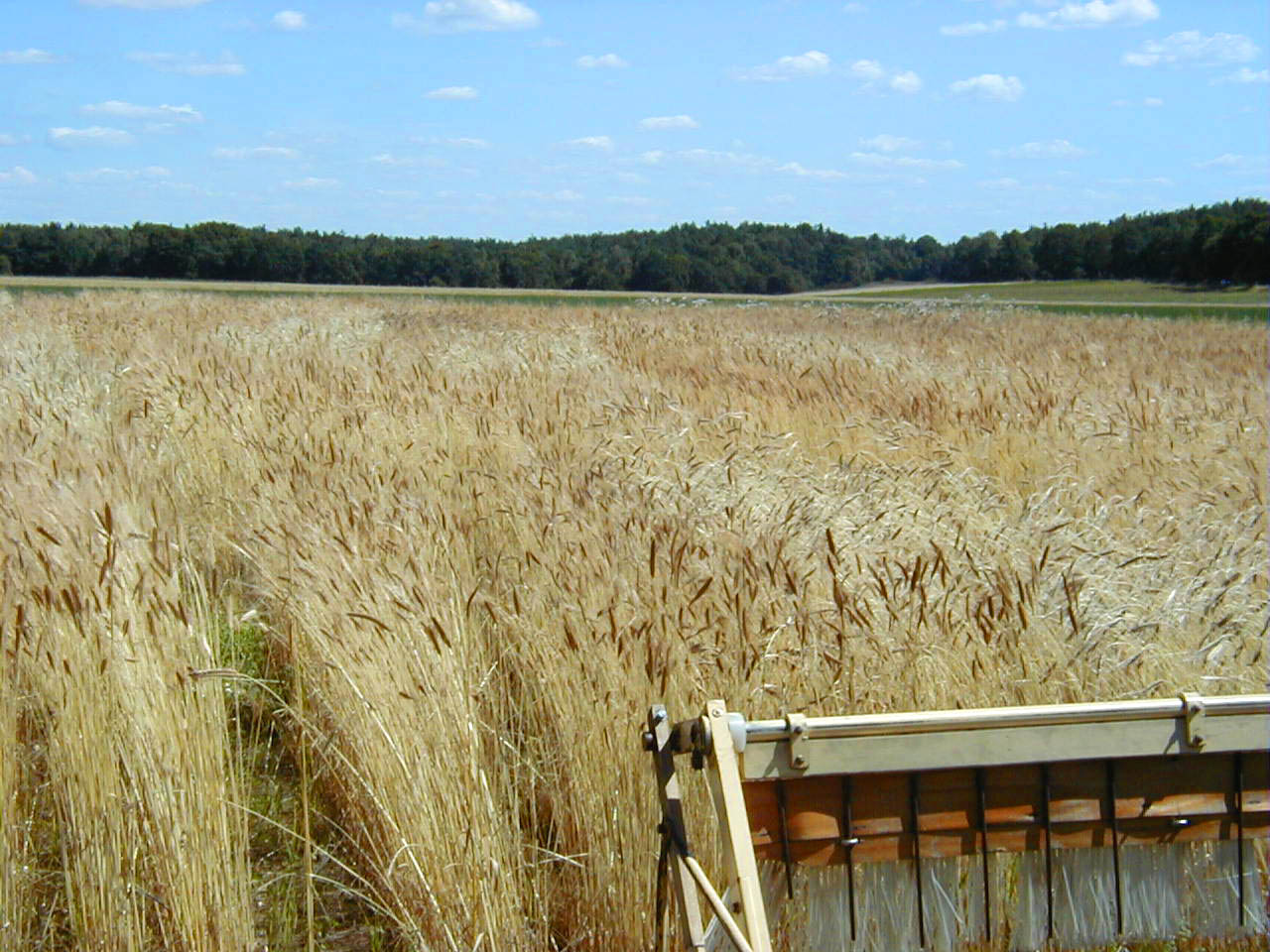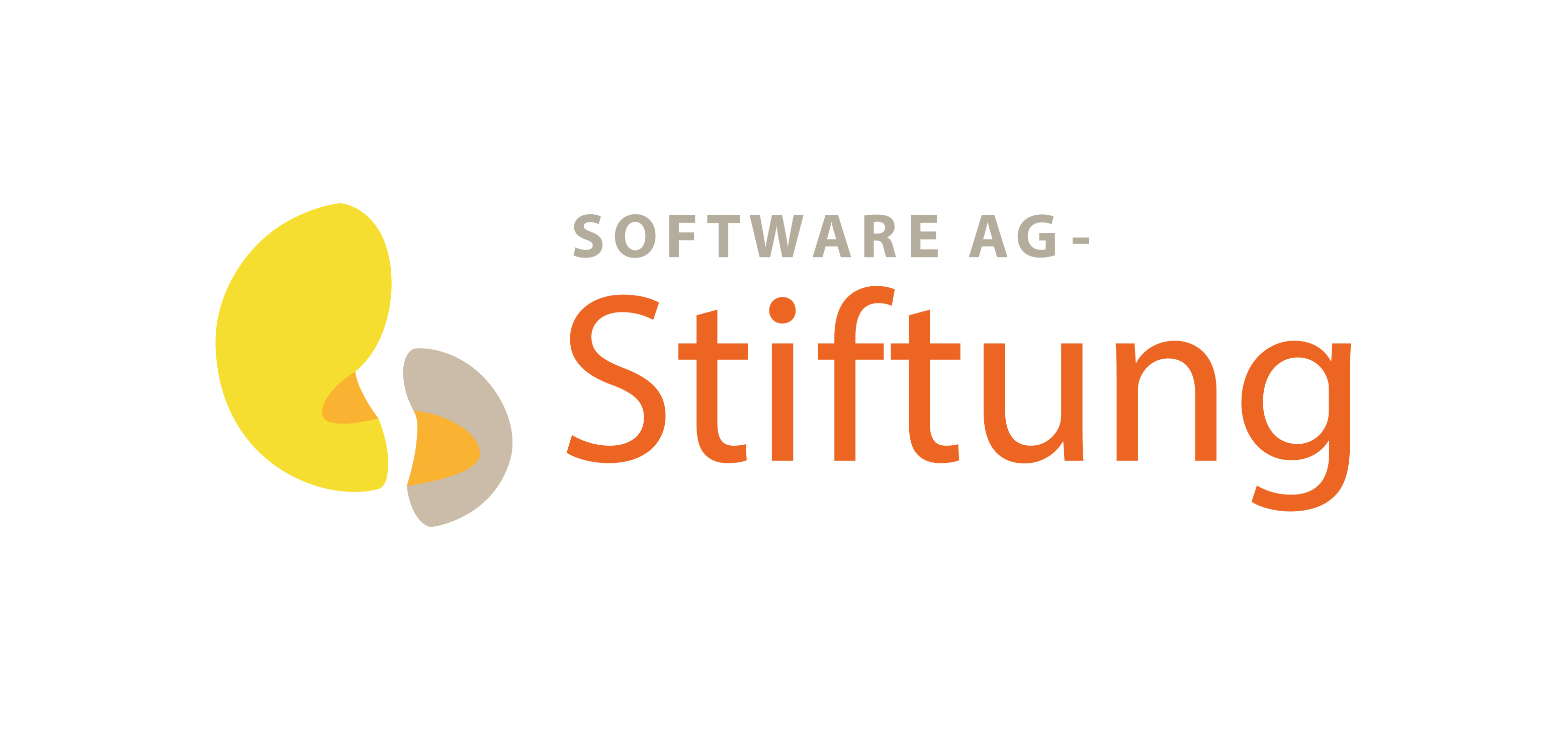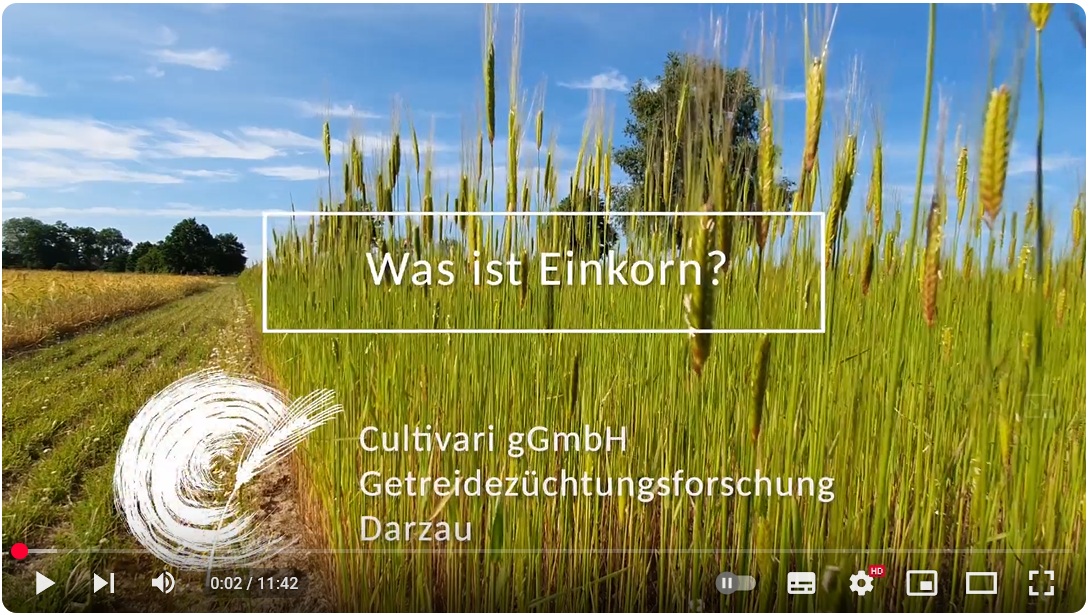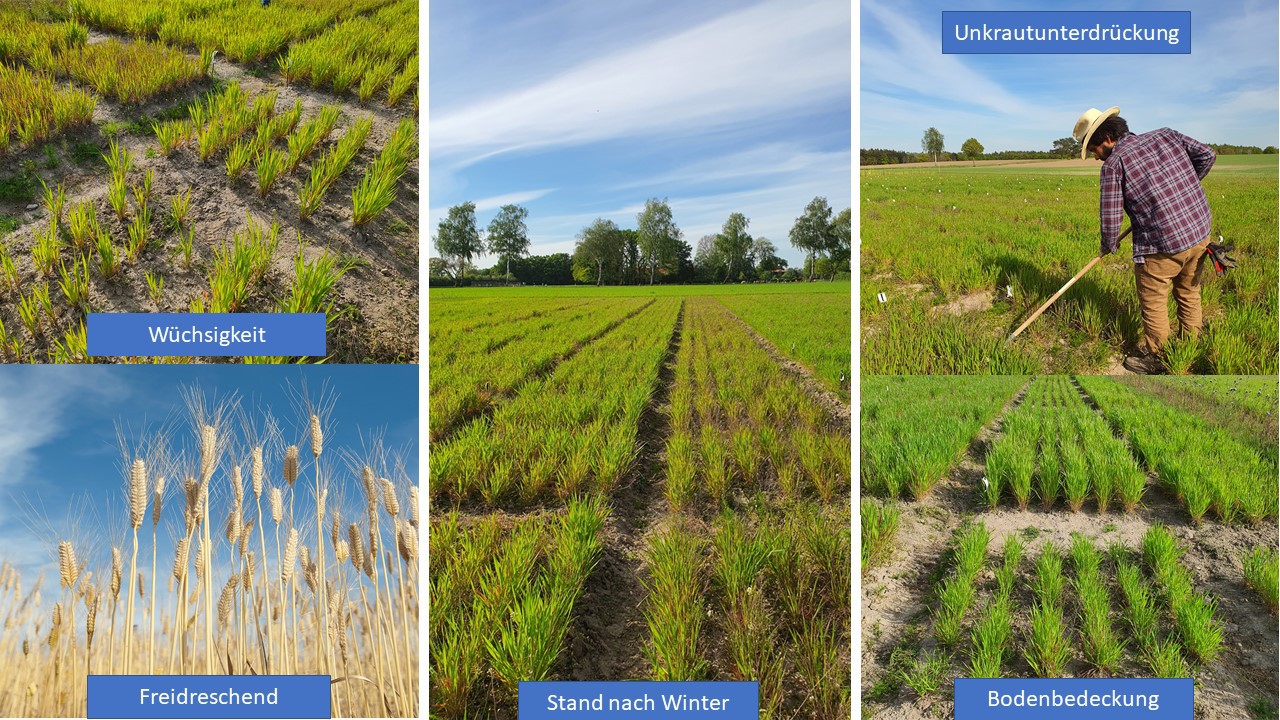1. Abdel-Aal,E.S.M.; Hucl,P.; Sosulski,F.W.(1995): Compositional and nutritional characteristics of spring einkorn and spelt wheats. Cereal-Chemistry 72:6, 621-624.
2.Cooper, R. (2015): Re-discovering ancient wheat varieties as functional foods. Journal of Traditional and Complementary Medicine, 5:3, 138-143.
3.D'Egidio,M.G.; Nardi,S.; Vallega,V.(1993): Grain, flour, and dough characteristics of selected strains of diploid wheat, Triticum monococcum L. Cereal chemistry 70:3, 298-303. ISSN 0009-0352.
4.Dorofeev, V. F.; Filatenko, A. A.; Migushova, E. F.; Udaczin, R. A.; Jakubziner, M. M. (1979) Wheat. Flora of Cultivated Plants, 1, 346.
5.Dvorak, J.; Deal, K. R.; Luo, M. C.; You, F. M.; Von Borstel, K.; Dehghani, H. (2012): The origin of spelt and free-threshing hexaploid wheat. Journal of Heredity, 103:3, 426-441.
6.Geisslitz, S.; Ludwig, C.; Scherf, K. A.; Koehler, P. (2018): Targeted LC?MS/MS Reveals Similar Contents of ??Amylase/ Trypsin-Inhibitors as Putative Triggers of Nonceliac Gluten Sensitivity in All Wheat Species except Einkorn; J. Agric. Food Chem. (66) 12395-12403.
7.Hammer,K.; Perrino,P.(1995): Plant genetic resources in South Italy and Sicily - studies towards in situ and on-farm conservation. Plant Genetic Resources Newsletter 103, 19-23. ISSN: 0048-4334.
8.Hammer,K.; Perrino,P.(1984): Further information on farro in South Italy. Kulturpflanze 32, 143-152.
9.Harlan,J.R.(1981): The early history of wheat: Earliest traces to the sack of Rome. IN: EVANS,L.T. & W.J.PEACOCK : Wheat Science Today and Tomorrow. Cambridge University Press, p 1-19.
10.Heun,M.; Schafer-Pregl,R.; Klawan,D.; Castagna,R.; Accerbi,M.; Borghi,B.; Salamini,F.(1997): Site of einkorn wheat domestication identified by DNA fingerprinting. Science 278, 1312-1314.
11.Karagoz,A.; Padulosi,S. (ed.); Hammer,K. (ed.); Heller,J. (ed.)(1996): Agronomic practices and socioeconomic aspects of emmer and einkorn cultivation in Turkey, 172-177. IN: Padulosi,S.; Hammer,K.; Heller,J.(1996): Hulled wheats.17.
12.Kling C.I.(2005): Nutzung genetischer Ressourcen für die Evaluierung von Einkorn und Emmer im Hinblick auf deren Einsatz in der Praxis. IN: VERN [Hrsg.]: On-farm-Erhaltung genetischer Ressourcen von Getreide und Ölpflanzen, ISBN 3-00-016314-X, p17-26.
13.Mayr, E. (1934): Die Bedeutung alpiner Getreidelandsorten für die Pflanzenzüchtung und Stammesforschung mit besonderer Berücksichtigung der Landsorten von Tirol und Vorarlberg. Zeitschrift für Züchtung, Reihe A8: Pflanzenzüchtung Bd. 14; Berlin, 195-228.
15.Nesbitt,M.; Samuel,D. (1996): From staple crop to extinction? The archaeology and history of the hulled wheats, 41-100.. IN: Padulosi,S.; Hammer,K.; Heller,J.(1996): Hulled wheats.17.
16.Pavicevic,L.(1973): Triticum monococcum in Yugoslavia. Byulleten' Vsesoyuznogo Ordena Leninga Instituta Rastenievodstva Imeni NI Vavilova 31, 84-86.
17.Pena-Chocarro,L. (1996): In situ conservation of hulled wheat species: the case of Spain; 129-146. IN: Padulosi,S. ; Hammer,K.; Heller,J.(1996): Hulled wheats.17.
18.Perrino,P.; Laghetti,G.; D'Antuono,L.F.; Al Ajlouni,M.; Kanbertay,M.; Szabo,A.T.; Hammer,K. (1996): Ecogeographical distribution of hulled wheat species; 101-119. IN: Padulosi,S. ;Hammer,K.; Heller,J.(1996): Hulled wheats.17.
19.Saponaro,C.; Pogna,N.E.; Castagna,R.; Pasquini,M.; Cacciatori,P.; Redaelli,R. (1995): Allelic variation at the Gli-A1m, Gli-A2m and Glu-A1m loci and breadmaking quality in diploid wheat Triticum monococcum. Genetical Research 66:2, 127-137.
20.Scheller,E.(1997): Die Bedeutung der Proteinqualität für die Ernährung der Nerven. Erfahrungsheilkunde 3/1997, 136-143. Heidelberg: Haug.
21.Schiemann, E.(1948): Weizen, Roggen, Gerste - Systematik, Geschichte und Verwendung.Jena:Fischer;102S.
22.Wieser, H.(1996): Arbeiten zur Charakterisierung toxischer Strukturen in Proteinen - Beiträge zur Zöliakieforschung. IN: Bericht 1996, Deutsche Forschungsanstalt für Lebensmittelchemie, Garching; 164-187.
23.Ziegler, J. U.; Steiner, D.; Longin, F. H.; Würschum, T.; Schweiggert, R. M.; Carle, R. (2016): Wheat and the irritable bowel syndrome – FODMAP levels of modern and ancient species and their retention during bread making. J. Funct. Foods. (25) 257-266. dx.doi.org/10.1016/j.jff.2016.05.019
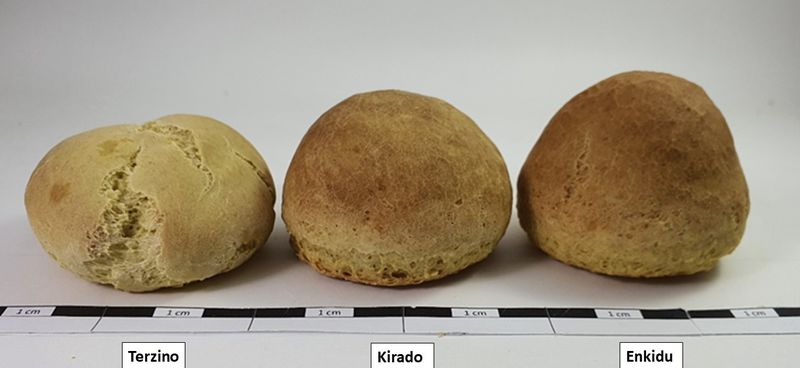
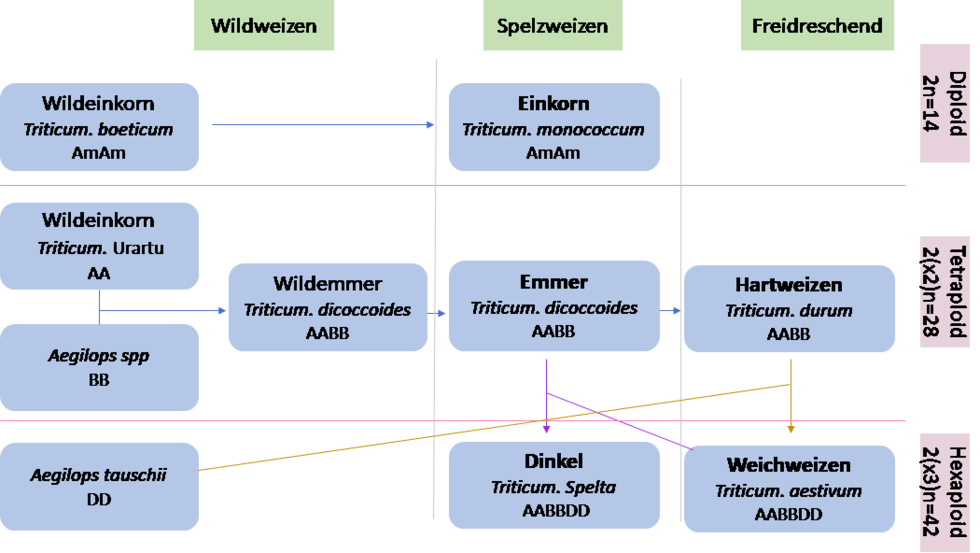
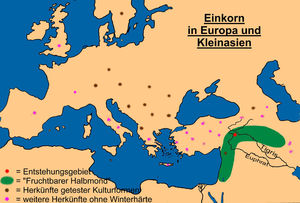 Ausgehend vom Gebiet zwischen Euphrat und Tigris haben sich die Kulturformen des Einkorns ab ca. 7600 v.Chr. schrittweise von Kleinasien über Europa verbreitet [15]. Außerhalb Europas und Kleinasiens war Einkorn nahezu unbekannt. Als Gebiet für die Inkulturnahme des Einkorns wird heute die Region der Karacadag-Berge, dem Ursprungsgebiet von Euphrat und Tigris im Südosten der Türkei, angenommen, weil die dort gesammelten Muster von Kulturformen den Wildformen in der Analyse am ähnlichsten waren [10].
Ausgehend vom Gebiet zwischen Euphrat und Tigris haben sich die Kulturformen des Einkorns ab ca. 7600 v.Chr. schrittweise von Kleinasien über Europa verbreitet [15]. Außerhalb Europas und Kleinasiens war Einkorn nahezu unbekannt. Als Gebiet für die Inkulturnahme des Einkorns wird heute die Region der Karacadag-Berge, dem Ursprungsgebiet von Euphrat und Tigris im Südosten der Türkei, angenommen, weil die dort gesammelten Muster von Kulturformen den Wildformen in der Analyse am ähnlichsten waren [10]. Da Einkorn einen sehr weichen Kleber hat, kann durch Säuerung eine zufriedenstellende Teigstabilität erreicht werden. In der
Da Einkorn einen sehr weichen Kleber hat, kann durch Säuerung eine zufriedenstellende Teigstabilität erreicht werden. In der 

